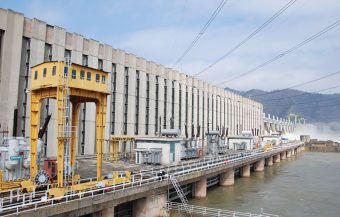
Energy from renewable sources is founded in the history of the Electric Power Industry of Serbia (EPS). The Pod Gradom on Đetinja hydropower plant in Užice was commissioned in 1900 and was the first power plant in Serbia that operated in line with Tesla’s principles of polyphase currents. The first electricity transmission in Serbia was carried out from the small hydropower plant Vučje to Leskovac via a 17-kilometre-long transmission line. The power plant was commissioned in 1903 to supply electricity and lighting to the weaving mills of Serbian Manchester, as Leskovac was called. Both HPPs, more than a century old, still produce green energy today.
“EPS’ hydro-sector is the pride of the Serbian electric power industry, and it is committed to improving the operation of hydropower plants, extending their working life and increasing efficiency,” EPS says.
EPS strives and bases its plans on boosting capacities that use renewable sources. The priorities include projects related to constructing wind farms and solar power plants.
The Kostolac wind farm is a pilot project implemented by EPS, with a 66-megawatt capacity, and it will be implemented in locations of Drmno, Petka, Ćirikovac and Klenovnik, at the site of depleted surface mines and landfills of the thermal power plant and the Kostolac mines. Twenty wind turbines will be installed, each with a power of 3.3 megawatts. The planned annual electricity production in the Kostolac wind farm is about 184 million kilowatt-hours, and the wind farm is expected to be finished in late 2024. This project is financed by a loan from KfW Bank and is implemented by the strategic goals of the Republic of Serbia related to renewable energy sources. EPS was also granted additional funds for 30 million euros from WBIF.
IN FOCUS:
- FUNDAMENTAL BUSINESS STRATEGIES TO A FASTER SUSTAINABLE DEVELOPMENT
- PADEJ GETS A SOLAR POWER PLANT WITH INSTALLED POWER OF 3 MWP
- IMPLEMENTATION OF RESPONSIBLE BUSINESS IN SERBIA AND THE WORLD
The Petka solar power plant is the first photovoltaic plant in the EPS division Thermal Power Plants and Kostolac Mines, which will be built on the external landfill of the Petka open-pit mine. It will have an installed capacity of 9.75 megawatts and a planned annual production of 15.6 gigawatt-hours of electricity. The solar panels will span 11.6 hectares. The scheduled value of the investment is 1.36 billion dinars and is financed by EPS. SE Petka is expected to be commissioned in late 2024.

The revitalization of Đerdap 1, our largest hydropower plant, which produces 5.5 billion kilowatt-hours of electricity annually, was recently completed. Now Đerdap 1 has greater power and reliability and a longer working life for the next 30 to 40 years. The nominal active power of the unit after the revitalization is 190MW, and before, it was 171MW, which means that, once the plant was revitalized, EPS virtually got a new 100MW power plant. Đerdap 1’s total power now stands at 1,140MW.
EPS plans to continue revitalizing and modernizing existing power facilities and boost aggregates’ power while constructing new hydropower plants. Several projects are underway as EPS focuses on renewable sources. The most significant projects are the modernization of the Bistrica, Potpeć, Đerdap 2 and Vlasin hydropower plants. The importance of the revitalization of EPS hydropower plants was also recognized by the European Union, which, via its Western Balkan Investments Framework (WBIF) programme, gave EPS a 49-million-euro grant to finance four renewable energy projects. 16.1 million euros are intended to revitalize the Vlasina hydropower plants. Also, the Bajina Bašta reversible hydropower plant, with a capacity of 614 megawatts, will have been restored by the end of 2024.
The plan also includes the construction of the Bistrica reversible hydropower plant, with a capacity of 656 megawatts. This is a key project that will enable the integration of planned variable renewable energy sources, as well as one of the strategic projects of both EPS and the Serbian government. The new capacities are definitely needed to balance out and stabilize the power system, not only in Serbia but also in the region. With the construction of RHPP Bistrica, Serbia would get flexible capacity in the heart of the electric power system for our country and the entire region.
EPS
Read the story in the new issue of the Energy portal Magazine RESPONSIBLE BUSINESS



